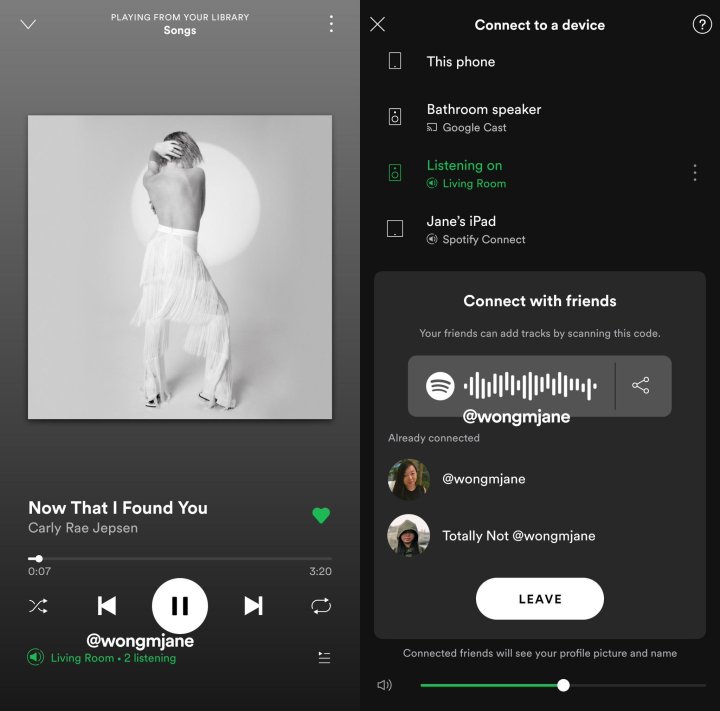
Though it’s still only available to company employees, Spotify appears to be working on a new feature called Social Listening, which lets friends collaborate on music queues and possibly listen to them together in real time. Spotted by app researcher Jane Manchung Wong, who detailed some of the feature’s inner workings on Twitter, Social Listening looks like Spotify’s existing Collaborative Playlists on steroids.
As the name implies, there’s a real social aspect to the feature. Those who choose to join in on your Social Listening invite will see your Spotify profile info, and you’ll be able to see theirs. Sending invites to join in can be done by sharing a dedicated URL via all of the usual means (texting, Facebook, etc.) but Spotify appears to have made in-person collaboration the main thrust of Social Listening, through the use of scannable QR-like codes.
If you and a friend are hanging out together, you can bring up a scannable code on your Spotify app that your friend then scans using their app. Once connected, participants can add tracks to a shared queue. In one of Wong’s screenshots, we can see text that says “now you can control the music together” though it’s not entirely clear if this control extends to being able to play/pause or skip tracks during the listening session.

From what we can tell from the screenshots Wong shared, these Social Listening sessions are playback device-specific. If you have multiple Bluetooth or Wi-Fi speakers at home that you’re controlling via Spotify Connect, Social Listening is an option for each device. In theory, we suppose this means that every room in your house could be home to a different Social Listening session.
Nowhere in these screenshots does it say that the feature could be used to create synchronized listening sessions across multiple locations, or even across multiple speakers in the same location, but one can’t help but wonder if this might be a logical next step once Social Listening hits the general Spotify membership.
For that to happen, however, we imagine Spotify will have to work out a way to properly compensate artists for these new social streams. It’s one thing to assume that most listening is done on an individual basis, but when large groups become involved things could change from a licensing point of view.
Editors' Recommendations
- Tidal vs. Spotify: Which music streaming service has the features you need?
- What is Spotify? Music, pricing, and features explained
- Spotify’s hi-fi lossless tier could arrive this year — as a paid upgrade
- Spotify wants you to stream socially with the new custom Friends Mix playlist
- Snapchat introduces four new social engagement features



